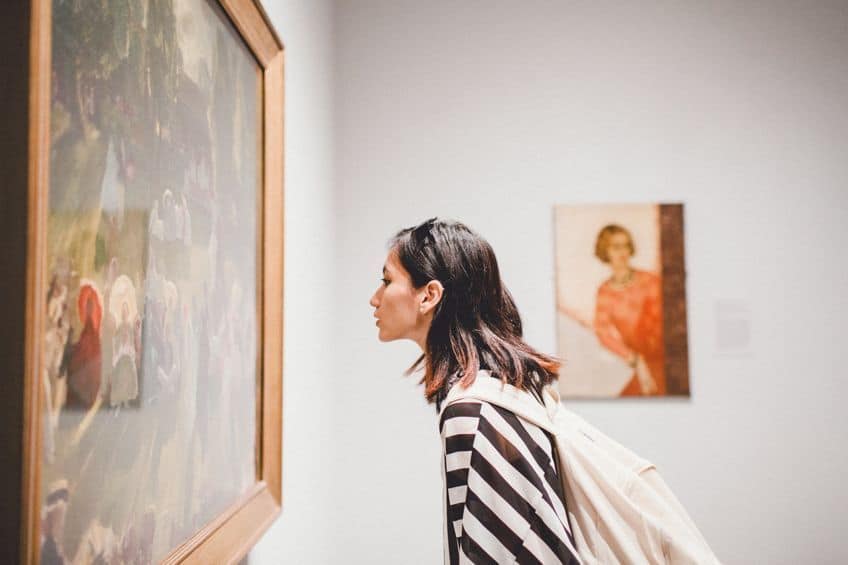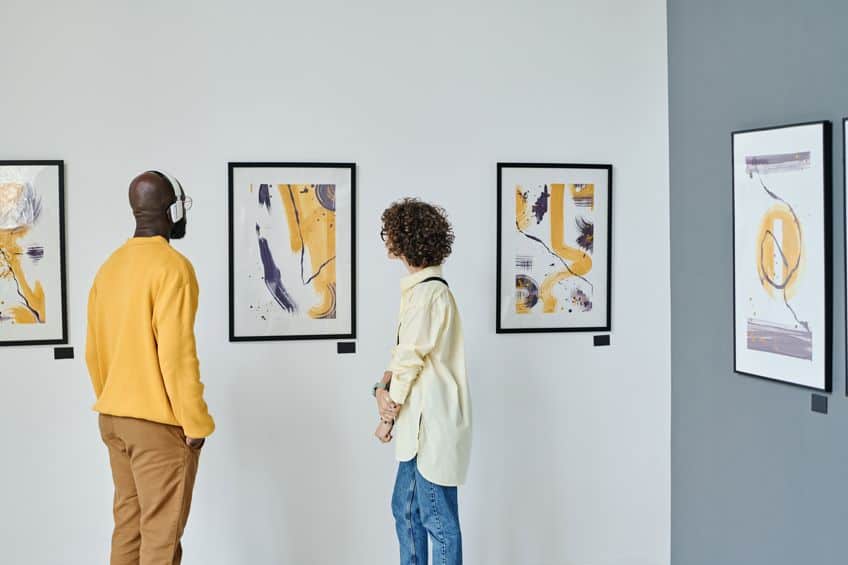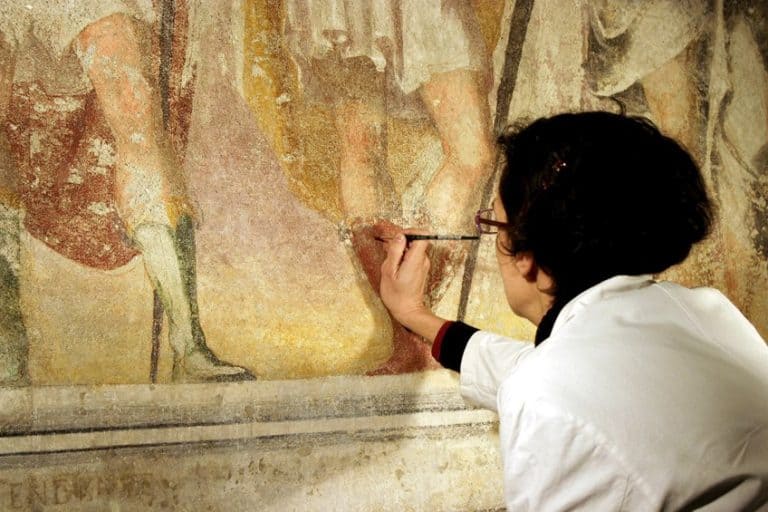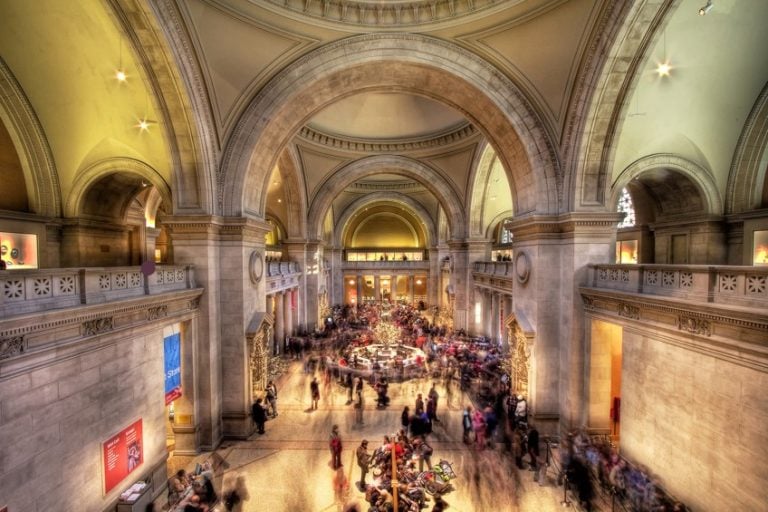How to Critique Art – An Easy Guide to Critiquing Art
What is an art critique example, and how does one learn how to critique art? While art critics may specialize in the field of analyzing, interpreting, and judging artworks, anyone who wishes to understand art on a deeper level will benefit from learning about critiquing art. This article will break down the various steps of critiquing art so that we gain a clearer understanding of how to critique art. Read more below as we examine art critique examples and history, as well as tips on how to provide feedback.
Table of Contents
How to Critique Art
Appreciating art is similar to the experience of appreciating music. For example, most people listen to music and enjoy the way it makes them feel, or perhaps it reminds them of a specific person or place. They may even enjoy the instrumentation and the lyrics of the song. Yet, music aficionados and critics will listen to the same piece of music and analyze it in an entirely different manner. They will perhaps analyze the song’s chord progressions and the arrangement of the instruments, or they will try to interpret the meaning of the song. Others will critique the overall engineering and production of the piece on a technical level. It is the same with art – while the masses enjoy how it makes them feel, art critics analyze works of art based on certain criteria by which they can all be equally measured.

A Brief History of Art Critique
The history of the critique of art is a record of the reactions that produced a social and aesthetic change in the public perception and idea of art, sometimes justifying its shift in direction. As far back as antiquity, philosophers have theorized about and criticized art. Plato, for instance, considered art to be a less advanced type of knowledge, if not an outright illusion of it. While he too saw art as a sort of imitation, Aristotle approached art critique in a somewhat different manner.
He states clearly in his Poetics, possibly the most significant treatise on art ever written, that art is a moral matter as it deals with human character.
He contended that imitation is a human tendency, and thus, imitative works of art, regardless of media, can deeply impact and move people. Plotinus, an ancient philosopher, considered art as more mystical than just representational of the earthly, and he popularized the concept that art could be full of beauty and that its worldly beauty is a mirror of greater, divine beauty. In some ways, all art criticism that subsequently followed is an expansion of these three thinkers’ concepts, often in tandem: art can be viewed as imitation, moral and psychological, or spiritual.
Understanding Art Forms
Despite the fact that the philosophers mentioned above produced important, long-lasting concepts about art philosophy, they were not what we would consider art critics, but instead set the stage for it. Art criticism, although guided by theoretical philosophies, is inherently more specific than philosophical discussions about art. “What is art criticism if not the relationship between the intuition of a work of art and a principle of judgment?” Lionello Venturi once asked.

Generalized notions about art can guide the principle of judgment, but understanding the “intuition” of artwork requires getting down to the particulars. Art critics have a thorough understanding of the finer details that makes an artwork great. This knowledge ranges from understanding the artist’s intention to analyzing the technical aspects of the work. In order to do this, they require a thorough understanding of the various mediums with which artists work as well as an understanding of the fundamental principles of art, such as the elements of art.
Why Do Art Critics Need to Understand Forms of Art?
Art critics interpret and judge artworks for the population at large. Therefore, they must have a thorough understanding of the different forms of art they are analyzing, such as painting, sculpture, installations, sketches, and other mediums, in order to perform their role properly. This analytical expertise enables them to offer educated opinions and analyses on the techniques, composition, cultural importance, and aesthetic worth of artworks. For example, an art critic who is unfamiliar with painting would essentially be unable to grasp the nuances of a painting’s color palette choices, particular brushwork technique, or composition.
They would also potentially be uninformed of the historical background that shaped the creative process of the artwork, which can have a big impact on how it’s interpreted and appreciated.
The Importance of Understanding the Art Fundamentals
Not only do artist critics need to be informed about the various mediums and forms, but they also need to have an understanding of the fundamental art principles and theories. One cannot describe an artwork if one does not speak the language, and art critics need to be well-versed in the terms and techniques associated with the various art forms. For example, they need to study the elements of art, the principles of art, and the fundamentals of art, just to get a better understanding of the building blocks that artists use to produce their works.

The Art of Observation
In art criticism, the act of attentively and thoughtfully analyzing artwork and acquiring information about its different features and characteristics is referred to as the art of observation. This involves examining the piece’s use of color, composition, textures, and underlying subject matter, in addition to its cultural, historical, and social contexts. This method entails looking beyond the artwork’s surface elements and analyzing its underlying meaning. The art of observation also entails engaging with the piece through one’s own sensory experiences and individual points of view.
This entails taking into account one’s intellectual and emotional reaction to the piece and using it as a foundation for subsequent analysis and interpretation.
Observing Art
Observing art is an important component of art critique, and it requires a thorough visual examination of the piece before going on to analysis and interpretation. An art critic will begin by taking a step back and viewing the piece as a whole, examining its general composition, colors, and shape. After that, they will walk closer to examine its nuanced details, paying special attention to the artist’s application of lines, forms, and textures. They will look at the media used in the piece, and consider how the artist utilized it to produce the piece.

Asking Questions
Observing art is all about asking questions. Art critics need to be able to describe a work, and they can do so by asking various questions about the work, relating to what the artist hoped to convey and if they did so effectively. They could ask questions about the context in which the work was made, how it compares to similar works, and its impact. They can observe the colors used and ask themselves questions about how the use of colors makes them feel, and what thoughts they evoke.
Asking the right questions is a useful tool when it comes to the next steps – analyzing and interpreting art.
Analysis of Art
When art critics analyze artworks, they usually follow a set of steps that help them gain a better understanding of the piece. For example, they may first want to identify the main themes of the artwork. Then they would begin to interpret those themes and the various messages and symbols within the work. They will also analyze the style of the artwork, and how it fits into a specific period of time. They will initially mentally divide the sections or elements by considering the textures, shapes, use of light and dark or vivid and dull colors, linework, and sensory attributes. They will examine the most fundamental art principles that were applied in the artwork at this stage.

Identifying the Main Theme
While the subject matter of artwork can often be clearly conveyed, sometimes the underlying themes can be missed or misinterpreted. A good art critic knows what to look for in a work that reveals its underlying themes and messages. The artwork’s subject matter is typically a good place to start when looking for a piece’s themes. If the artwork represents a historical event, for instance, it may allude to themes of power, war, or social injustice.
Art critics can also search for recurrent motifs or symbols, such as repeated patterns or the incorporation of specific meaningful objects. The artwork’s composition can even reveal information about its underlying themes. Asymmetrical works, for instance, can imply themes of instability.
Interpretation of the Artwork
Based on what you know so far about the piece, what do you believe the artist was attempting to convey? This is the question that art critics ask themselves at this stage of analysis. Besides the artist’s intention, how did you react to it? What was your emotional response and did it trigger something deeper within when you viewed it? Was the artist successful in conveying what he wanted to? Interpreting an artwork is not only based on your own reaction but also a consideration of how it fits into the era and style in which it was made. How does it compare to other works from the same movement, and did it offer anything new to the style it was produced in?

Style
That brings us to the question of style. While artwork can be produced using certain aesthetic elements derived from art styles, not all art falls into a style or movement, such as outsider art, and needs to be appreciated for its unique aspects. Even so, art critics can still apply the same set of criteria they would with established styles to analyze how it was produced, such as its use of complementary colors, the quality of the linework, the shading, textures, and so on.
The importance of critiquing styles is that it often results in the emergence of new styles in reaction to older styles that are deemed too outdated and restrictive, allowing innovative and fresh ideas to flourish.
Judging Artworks
The first step of judging a work is using the various criteria that one would use to assess the work on a technical level. Following that, you are then able to make your own judgment after considerable observation, analysis, and interpretation of the piece in question. This is your personal assessment based on your perspective of the work of art. Why do you believe this work has inherent quality? What is the work of art’s worth to you? Is it, for instance, an aesthetically pleasing work of art that conveys an essential social message, influences how I perceive the world, draws perceptive connections, or confirms a religious belief? Do you believe the work communicates a valuable concept, sentiment, or principle to others? Could the improper use of the various elements of art be the source of your dissatisfaction with the piece?
Providing Feedback
While any critique in general can be viewed as negative, this is not always the case. Art critics are also able to impart useful and constructive criticisms that can potentially help an artist improve their works. In fact, one does not even need the word of an art critic; artists often critique each other’s work, as well as their own, by stepping back during the process and asking themselves whether the work adheres to fundamentals, such as scale and perspective, and if they are applying the elements and principles of art effectively.

That concludes our article on how to critique art. As we have discovered, critiquing art is not simply about whether a person likes or dislikes a piece, but is more about the criteria that critics use to assess a piece of art and determine its value. Critiquing art is not about finding fault with works of art, but learning how to appreciate them on a deeper level.

Frequently Asked Questions
What Is an Art Critic?
An art critic is similar to a film critic – they examine the work and determine its significance and value by analyzing it. Art critics need to have a fair amount of knowledge of how art is created and its history in order to effectively critique it. However, it is not only for specialists, as anyone wishing to learn how to appreciate art should learn how to critique it properly too.
What Is an Art Critique Example?
Any artwork can be critiqued using the method above, such as Pablo Picasso’s Guernica (1937). We can observe the subject matter and gain an understanding of the historical context. We can analyze the anguished and contorted figures for clues on the themes, and we can interpret it as a statement against war. We can then judge it based on his skill as an artist and his ability to convey a message.
Nicolene Burger is a South African multi-media artist, working primarily in oil paint and performance art. She received her BA (Visual Arts) from Stellenbosch University in 2017. In 2018, Burger showed in Masan, South Korea as part of the Rhizome Artist Residency. She was selected to take part in the 2019 ICA Live Art Workshop, receiving training from art experts all around the world. In 2019 Burger opened her first solo exhibition of paintings titled, Painted Mantras, at GUS Gallery and facilitated a group collaboration project titled, Take Flight, selected to be part of Infecting the City Live Art Festival. At the moment, Nicolene is completing a practice-based master’s degree in Theatre and Performance at the University of Cape Town.
In 2020, Nicolene created a series of ZOOM performances with Lumkile Mzayiya called, Evoked?. These performances led her to create exclusive performances from her home in 2021 to accommodate the mid-pandemic audience. She also started focusing more on the sustainability of creative practices in the last 3 years and now offers creative coaching sessions to artists of all kinds. By sharing what she has learned from a 10-year practice, Burger hopes to relay more directly the sense of vulnerability with which she makes art and the core belief to her practice: Art is an immensely important and powerful bridge of communication that can offer understanding, healing and connection.
Nicolene writes our blog posts on art history with an emphasis on renowned artists and contemporary art. She also writes in the field of art industry. Her extensive artistic background and her studies in Fine and Studio Arts contribute to her expertise in the field.
Learn more about Nicolene Burger and the Art in Context Team.
Cite this Article
Nicolene, Burger, “How to Critique Art – An Easy Guide to Critiquing Art.” Art in Context. May 12, 2023. URL: https://artincontext.org/how-to-critique-art/












Hi Nicolene, I am thinking of quoting and using your blog “How to Critique Art” on my own blog.
My insight will be about differentiating “human generated art” and “machine generated art” that are two different things to critique and evaluate, differently (in substance).
Frederic.